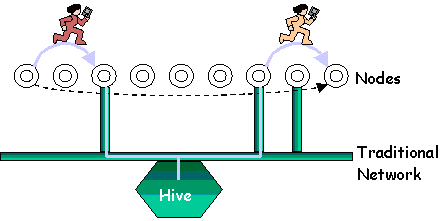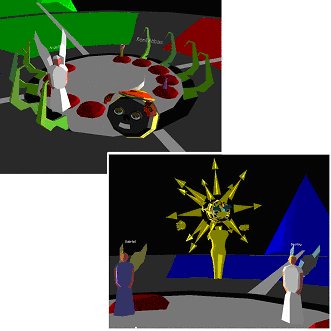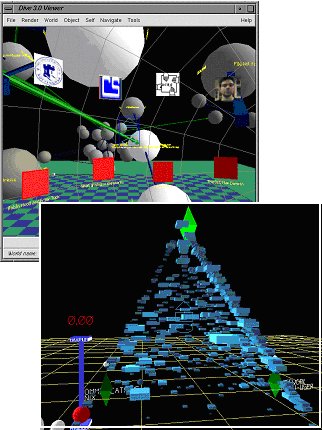
Jung Chang is supposedly one of the most successful Chinese authors; yet her work is banned in her native country and she now lives in London, England. I first heard about “Wild Swans” several years ago but never got around until reading it until now. Now I’ve read it I’m sorry that I waited so long.
A quote on the cover says
It is impossible to exaggerate the importance of this book.
I thought to myself that this must be exaggeration. I expected the book to be interesting; I wanted to find out more about China’s recent history and I was sure it would be interesting to read what it was like to live through the cultural revolution, but I didn’t think its importance would be more than a bit of human interest. I was wrong: the quote is right on the money. This book _is_ important especially if you’re like me and thought that you understood enough about China. I thought that I knew what the cultural revolution was about. I thought it was just some craziness in which doctors, administrators and other professionals were sent to work in the fields. What I had no idea about was what it was really like for the people involved. I had also thought that the Chinese government was uniformly bad, responsible as it has been for the invasion of Tibet and gross human rights violations. While that is true, it seems that, like many things, the truth is more complex than it first appears.
But this book is more than just dry historical fact - it packs an emotional punch that is hard to overstate. Not only is great suffering described but also great courage and bravery. I often found myself wondering how I would have acted if I found myself in similar situations to the author’s parents and whether I would have the courage to act as they did.
The book opens in 1909 with the birth of the author’s grandmother Chang Yu-fang. Life in China at that time was hard. The country was controlled by warring warlords, there was no legal system and unless you were rich or an official you had very little security. There were extremes of wealth and poverty. For women, who were treated more as possessions than people, life was harder still. Marriages were arranged and contact between young men and women strictly regulated by society. It was considered shameful for two young people to marry because of love because they weren’t supposed to have been able to have enough contact to enable them to fall in love. Yu-fang is born to a man, Yang Ru-shan, who’s ambition is to become a police official and thereby obtain a live of relative security and luxury. His parents have sacrificed almost everything to give him an education and they arrange his marriage to a woman (Er-ya-tou: literally “number two daughter”) six years his senior so that she can teach him about life. Yu-fang is born a year or so after the marriage. In keeping with Chinese custom at that time her feet are bound at the age of two so for the rest of her life walking is painful for her. As Yu-fang grows up as a beautiful intelligent young woman her father sees her as his chance for the good life. When a powerful warlord, General Xue, visits town, Yu-fang’s father, by this time a minor official, arranges for him to meet his daughter as if by accident. The warlord, already married, asks to take Yu-fang as a concubine. Ru-shan eagerly agrees and uses the money and influence he obtains in this way to become a senior police official and obtain two concubines of his own. He despises his wife and, though he later has another daughter and a son by her, he treats her harshly and earns the hatred of his own children.
Meanwhile Yu-fang has a lonely life. After just seven days with her new husband she is left in a house by herself and forbidden to leave even to visit her own family. It is years before the warlord returns and she conceives a child, De-hong, the author’s mother who is born in 1931. Although he has been married for years this is General Xue’s first child and when the baby girl is a year old he orders Yu-fang to move to his main house where he lives with his wives. On arriving with her sister, Yu-fang finds that Xue’s first wife intends to take her child and claim her as her own. Yu-fang is victimised by the other wives and General Xue’s health deteriorates. No able to take any more abuse and not allowed to see her own daughter Yu-fang is driven to steal her daughter back, together with her sister and child she escapes back to her home town and goes into hiding in the home of an old school friend.
After General Xue dies, Yu-fang marries Dr. Xia, the head of the household where she was in hiding, a wealthy and successful doctor and a man thirty-nine years older than her. Dr Xia’s children not wanting to kowtow to a woman younger than them protest vociferously. Matters deteriorate until Dr Xia’s eldest son shoots himself in protest. Finally, Dr Xia abandons his home to his children and him, Yu-fang and De-hong move to the nearby town of Jinzhou where they live in poverty under the Japanese occupation of Manchuria. Life under the Japanese is harsh and De-hong sees people she knows, including a close friend, executed by them.
After the Japanese are driven out of Manchuria at the end of the second world war the region comes under the control of the Western-backed Kuomintang. At first things seem better, but the Kuomintang are no better than the old warlords and while the common people starve during food shortages the officers and officials enjoyed lavish banquets. After the end of the second world war the truce ends between the communists and the Kuomintang and the civil war that was interrupted by the fight against the Japanese continues. The kuomontang crack down on possible dissidents and spies. It is in this environment of mistrust and insecurity that grows into a young independent woman. She is almost married into the wealthy Liu family but Dr. Xia, though favouring the marriage, allows De-hong to decide for herself - for his time (and age) this was very liberal of him. De-hong chooses to enter a teacher training college and becomes a student activist in response the the repression and brutality around her.
She finds herself drawn to communist propaganda and becomes involved with one of the cells operating in Jinzhou. It is in this way that she meets the author’s father, Wang Shou-yu, a highly educated young man who leads a communist guerilla cell operating near Jinzhou. They meet and fall in love in spite of the disapproval of Yu-fang who favours Liu’s son. The communist capture of Jinzhou greatly impresses the townspeople because it was the first time that a conquering army had treated people respectfully without any rape or pillage. The communists encourage the peasants to sell food to the starving townspeople and generally give the appearance of treating people fairly.
The years that follow, from 1949 to to about 1955, showed me a face of the communists that I hadn’t expected. Food is fairly distributed. Women experience more freedom than before and the government in mostly fair and even handed. Although times are sometimes hard at least there is a fair distribution of resources - this is huge improvement compared to the extremes of poverty and decadence witnessed in previous regimes. Life seems good and seems to confirm the faith of the author’s mother and father in the party and the communist system. Although both Shou-yu and De-hong believe strongly in the government there is a crucial difference between them: De-hong believes that family should come first whereas Shou-yu believes that he, as a highly placed administrator, must be completely even-handed even though it might be contrary to the interests of his wife and family (for example at one time he denies drugs to his wife because he wishes some stock at the hospital to be available for others). This is sometimes a cause for tension between them; although many people are greatly impressed by Shou-yu’s fairness.
However, the good times do not last. Even in the early days there are campaigns to identify “counter revolutionaries” - although relatively mild at the beginning these become more and more intense and culminate in the insanity of the cultural revolution. The various campaigns provide opportunities for people to settle grudges by denouncing their enemies and this is eventually how Shou-yu and De-hong fall from grace.
The author documents cases in which the Mao administration asks for comments and criticism and then punishes anyone who speaks up. The almost constant witch hunts meant that instead of needing a vast secret police network as in the Soviet Union the Mao administration relied on ordinary citizens to inform on one another.
Two of the events that illustrate the madness of the Mao regime are the Great Leap Forward and the Cultural Revolution. The great leap forward occurred during the author’s childhood and she describes how every organisation from schools to offices to hospitals was drafted to help create steel. Each maintained a furnace which had to be kept alight. Iron was scavenged from every possible source (woks, bed springs, iron railings, rusty nails) and millions of people basically stopped their normal jobs in order to search for iron to put in the furnaces and ensure that the furnace temperature didn’t fall. Surgeons would interrupt operations in order to put more fuel in the furnaces such was peoples’ fear of being seen not to be committed to the great leap forward. Even as a six year-old schoolgirl, the author had a quota to fill. Official estimates were that 100 million peasants were pulled off agricultural duty in order to make steel thereby setting the scene for a disastrous famine. People went along with this craziness due to the fervour inspired by the cult of Mao and also fear of being beaten if they were not seen to contribute.
Then came the cultural revolution and, despite being exemplary officials Shou-yu and De-hong were in their turn denounced by people who bore grudges against them. Shou-yu’s books were taken and burnt by student gangs completly ignorant of whether the books were counterrevolutionary or not (in fact since Shou-yu was still a believer in the party the books certainly weren’t counter revolutionary). They had to attend meetings in which they were publicaly humiliated and sometimes beaten. Shou-yu, the author’s father was denounced and forced to work in a labour camp far from his family. De-hong took great risks by visting Beijing to plead his case eventually winning her husband’s release but not before his health was ruined. Meanwhile the author still believes in Mao, even though some acts by the government are obviously wrong she tends to attribute them to others and not to Mao who received godlike adoration. For a while the author works in an agricultural commune, then as a barefoot doctor (for which she receives no medical training) and finally in a factory as an electrician.
Mao and his wife demonstrated a complete contempt for human life as demonstrated in 1976 when an earthquake killed 242 thousand people. Mrs Mao said
There were merely several hundred thousands deaths. So what? Denouncing Deng Xiaoping concerns eight hundred million people.
After the death of Mao when Deng Xiaoping returns to power he liberalises the government and life becomes easier and the government more sane. Many “class enemies” are rehabilitated. All the damming entries in De-hong’s file describing suspected Kuomintang connections were thrown out and burnt. The author regards Deng as a hero and so it is all the more shocking for her when Deng oversees the Tiananmen Square massacre.
The version of the book that I read has 676 pages and so this review has, necessarily, only skimmed the surface of the contents and in doing so does not convey the strong emotional punch of the events the book describes, In summary, this book is very much worth reading because, in spite of the horror and cruelty described, the courage and resilience shown by the author’s family in particular Yu-fang, her grandmother, Shou-yu, her father and De-hong, her mother is uplifting and inspiring. Another important reason for reading this book is it serves as object lesson of what can happen when a totalitarian government gains power and should make us ever more careful of who we allow to govern us and especially wary of political and religious extremists of any kind.
ISBN: 0006374921
Amazon.co.uk,
Amazon.com




 This a
This a Few novels pack
Few novels pack